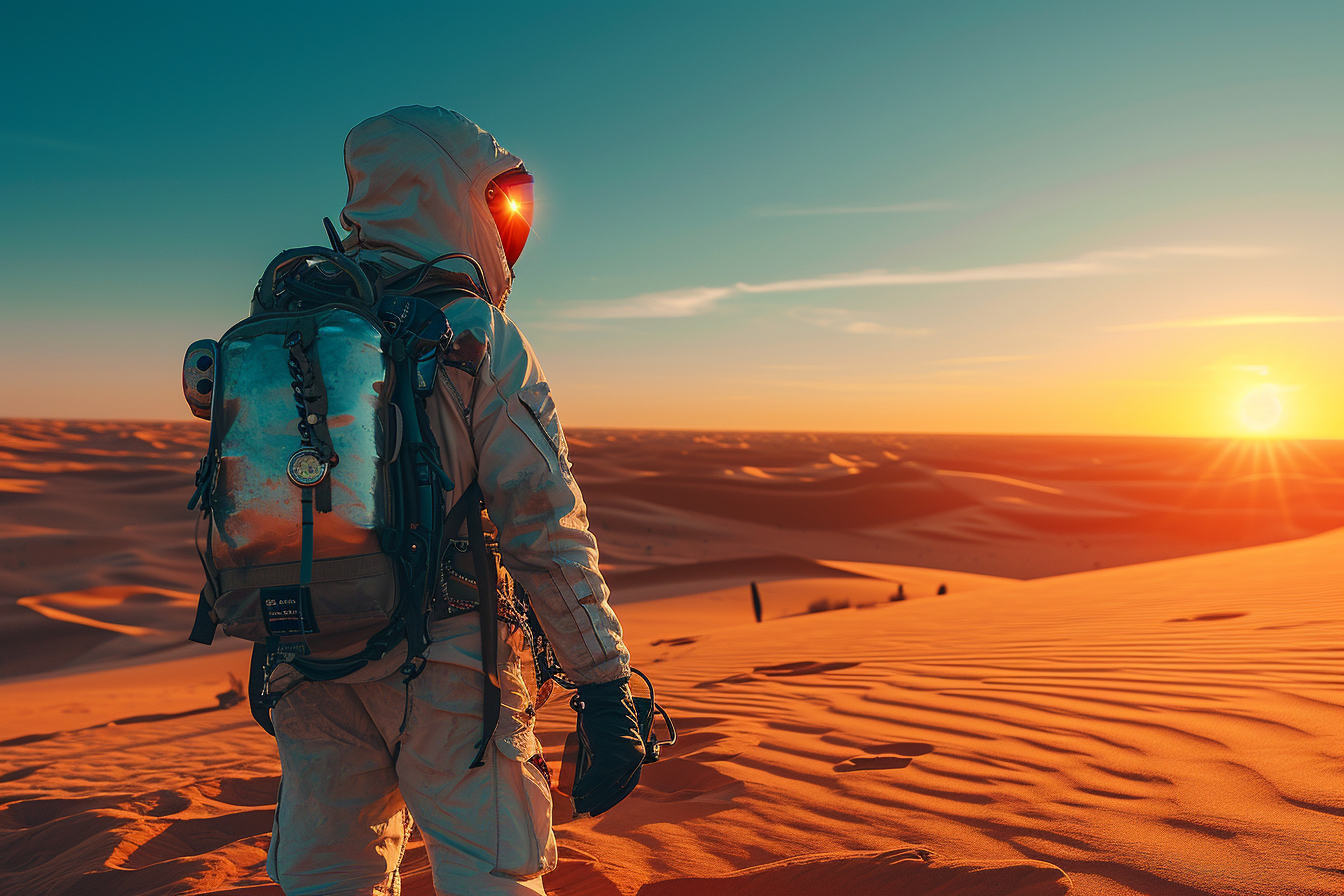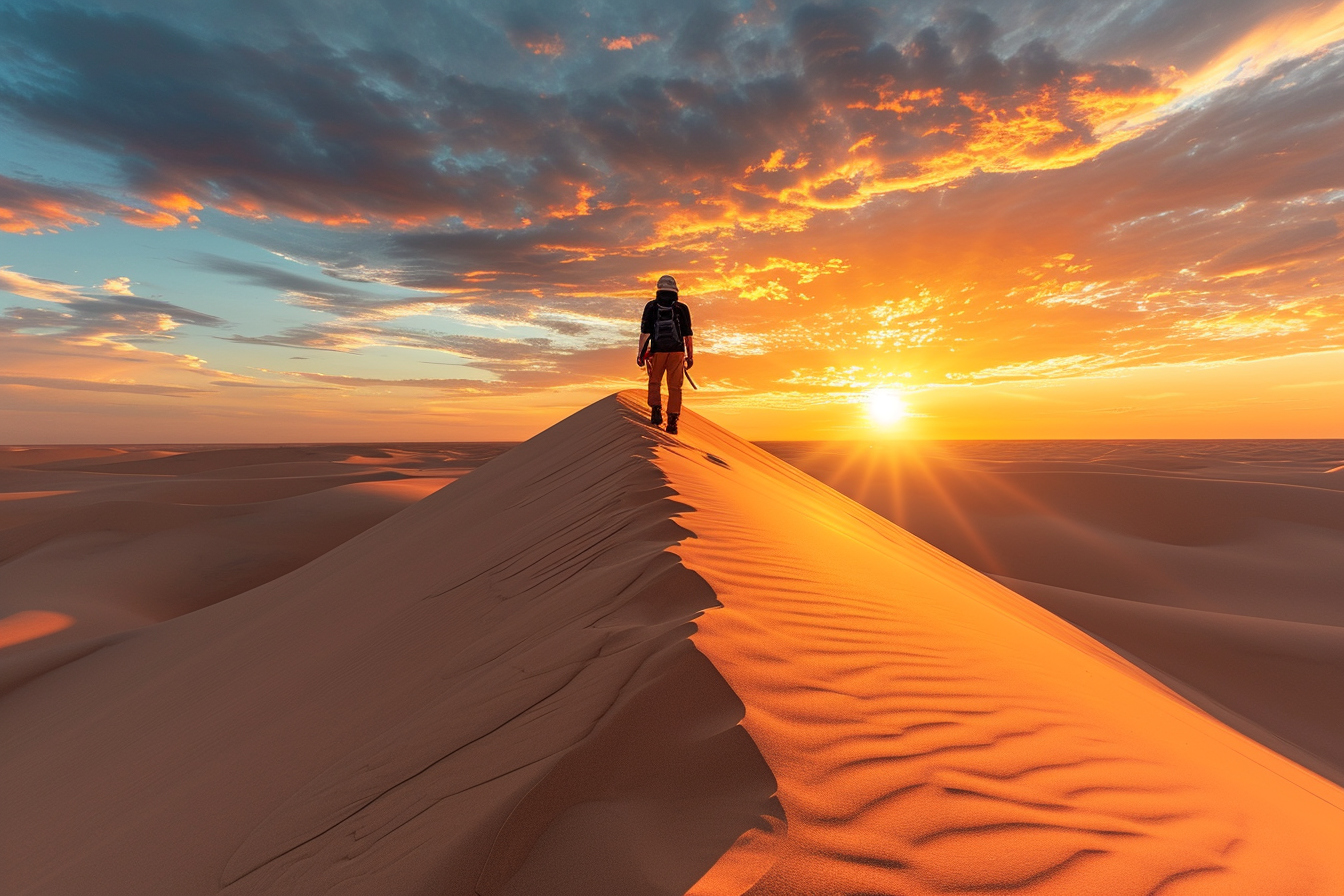When it comes to capturing the stark beauty of arid regions, photographers face a unique set of challenges and opportunities. Desert photography is an endeavor that rewards patience, preparation, and an understanding of the elements that make these landscapes so compelling. With the right techniques, one can craft images that convey the desert’s enigmatic splendor.
Embracing the desert light
Harnessing golden hours
One of the defining characteristics of desert photography is the quality of light. Morning and evening golden hours bring out the textures and colors of the landscape, casting long shadows that emphasize its contours and shapes. These periods provide a softness that counteracts the typically harsh and unflattering midday sun.
Managing harsh midday lighting
Contrary to popular belief, compelling desert images can indeed be captured in the midday light. It is all about understanding light behavior and using techniques such as high dynamic range (HDR) photography to manage extreme contrasts. Photographers should also capitalize on the vividness that comes with midday exposure to bring out the stark blues and earthy tones that define desert scenes.
Composition strategies in desolate terrains
Leading lines and visual paths
Deserts are a prime canvas for adopting leading lines in compositions. The sweeping dunes, desert roads, or even patterns carved by the wind on sand surfaces can guide the viewer’s eye through the image, creating a sense of journey and exploration.
The impact of minimalism
Minimalism shines in desert scenes. The simplicity of a lone cactus against a vast, empty sky or the lone symmetry of a dune, offers a powerful statement. This approach encourages the observer to focus closely on the subject and its relationship with space.
Color theory in a unique palette
Deserts possess a palette that is inherently warm and sometimes monochromatic. Photographers should understand color theory to effectively balance these tones. The juxtaposition of warm sands against a deep blue sky or the vibrant orange of a desert flower in bloom can create compelling imagery that resonates due to its simplicity and harmony.
Capturing grandeur and detail
Prioritizing scale and perspective
To convey the sheer expanse of deserts, photos must establish a sense of scale. By including subjects like people, vehicles, or flora, the vastness of the desert backdrop becomes tangible. This comparison draws the viewer into the scene, offering a window into its grandiosity.
Macro photography in the desert
While wide, sweeping desert vistas are breathtaking, the smaller details of the desert landscape can be equally mesmerizing. By focusing closely on patterns in the sand, the textures of rocks, or the intricate forms of desert flora and fauna, photographers can introduce viewers to the desert’s overlooked intricacies.
Dealing with the desert climate

Gear protection from sand and heat
The harsh desert climate poses real threats to camera equipment. Safeguarding gear from sand, dust, and extreme temperatures is paramount. Enclosures, filters, and regular maintenance can extend the life of your equipment in these conditions.
Hydration and health safety
Beyond camera care, photographers themselves must prepare for the demanding conditions. Staying hydrated, protecting skin and eyes from the sun, and knowing one’s physical limits are essential to ensure not just successful photography but personal safety as well.
Navigating the wilds: location and timing

Researching iconic and hidden gems
Strategic planning is critical for desert photography. Researching locations beforehand, whether it’s for the iconic Joshua Tree in the U.S. or the lesser-known Wadi Rum in Jordan, is necessary to make the most of your journey. Understanding when these locations have the best light and the least crowd can greatly impact the shots you take.
Capturing the elements: weather and time of year
The desert is a dynamic environment where the weather can drastically alter the landscape. From sudden dust storms to seasonal blooms, being aware of these elements can offer unique opportunities and add mood to your imagery. Timing your visit to coincide with these events requires diligent monitoring of weather patterns and local insights.
Post-Processing to enhance desert beauty
The role of editing software
Raw images can often fail to capture the vibrancy and texture seen with the naked eye. Post-processing is a vital step in desert photography. Tools like Lightroom or Photoshop can be used to correct exposure, enhance colors, and bring out the drama in the desert skies.
Balancing authenticity with artistry
In editing, the challenge lies in maintaining the desert’s true essence while elevating the image artistically. Striking a delicate balance between representing the harsh reality of the environment and creating a visually stunning image is the ultimate goal.
Ensuring ethical and sustainable practices
Leave no trace
Photographers venturing into deserts have a responsibility to preserve the integrity of these fragile ecosystems. Following ‘Leave No Trace’ principles ensures these pristine spaces remain untarnished for future generations to admire and for the continued survival of the wildlife that calls these environments home.
Cultural sensitivity and respect
Many deserts are not only natural wonders but are also rich in cultural heritage and significance. Photographers must approach these regions with respect for indigenous communities and an awareness of historical contexts. Creating images that honor these aspects can add profound depth to your work.
Mastering the art of desert photography is an exercise in patience, awareness, and technical skill. By embracing the uniqueness of arid environments, photographers can craft images that tell the story of these majestic landscapes. Through careful consideration of lighting, composition, color, and detail, one unlocks the potential to transform the barren and desolate into something extraordinary.
By delving into the nuances of desert photography and respecting the environment, photographers can create work that goes beyond mere representation. They can capture the soul of the desert, offering viewers a glimpse into a world of extreme beauty and endurance. Whether you are a seasoned professional or a passionate amateur, the desert presents an open canvas waiting for your interpretation. While this holds true, continue to hone your technique, refine your vision, and you may find that the desert reveals its secrets to you, one frame at a time.


